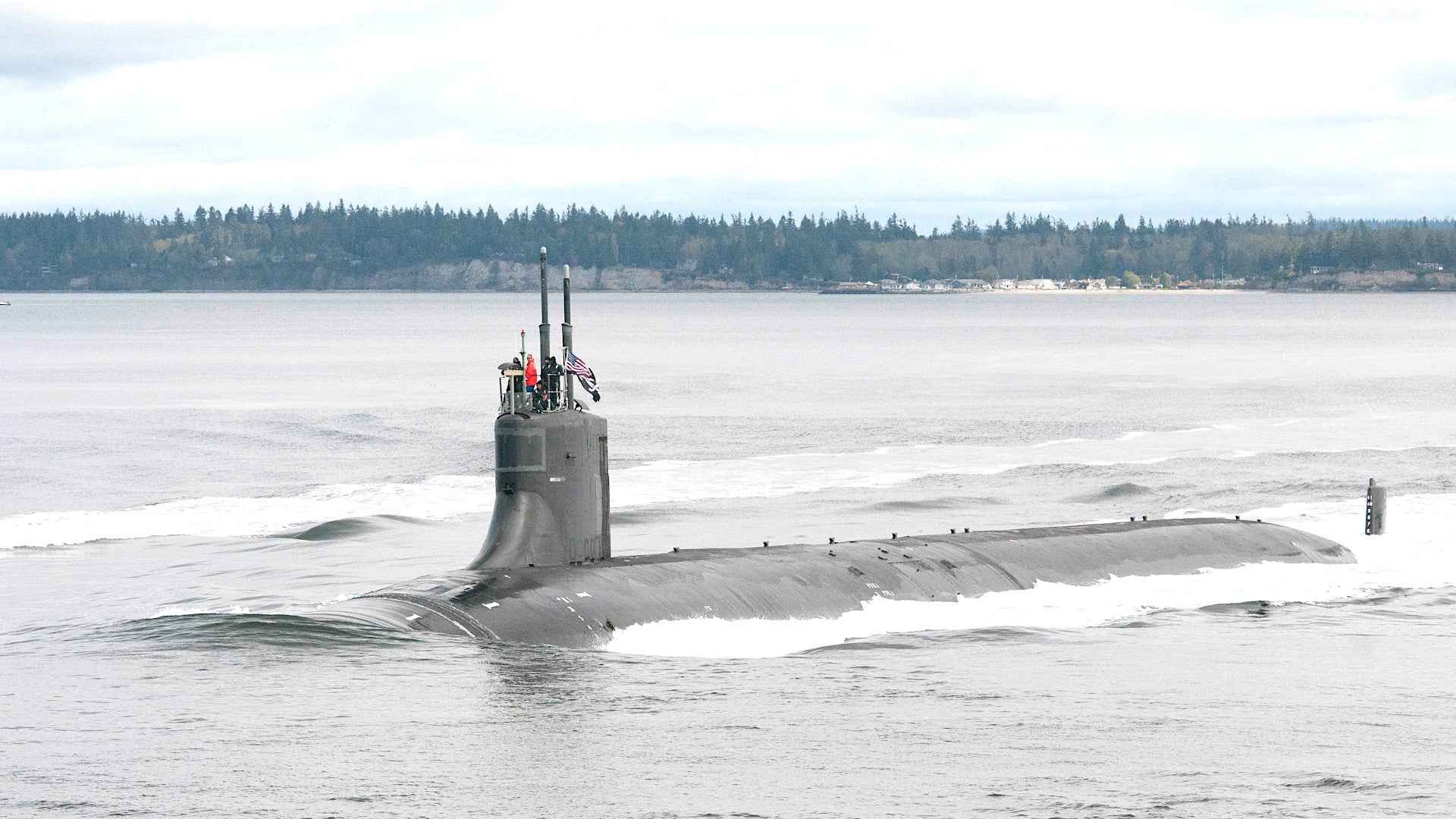The U.S. Navy is asking for funds to begin developing the requirements for an all-new attack submarine, now known as SSN(X), as well as examining associated technologies and concepts of operation, in its latest annual budget request. The fact that the service was interested in a new submarine focused primarily on attacking surface ships and other subs, akin to the original plan for its significantly truncated Seawolf class, first emerged more than a year ago.
The Navy wants $1 million to begin very preliminary work on the SSN(X) program in its budget proposal for the 2021 Fiscal Year. The service is hoping to receive at least $1 million each year through the 2025 Fiscal Year, as well. The budget documents also note that this is a “new start” project that it should not be confused with the separate budget for “New Design SSN,” which pays for research and development related to the future blocks of the Virginia class attack submarine. It’s also important to note that Congress still has to approve the Navy’s request.
“The U.S. Navy must produce and maintain a submarine fleet that is of sufficient capability to protect America from current and future threats,” the section on SSN(X) in the budget proposal explains. “SSN(X) is required to maintain a submarine force structure, and will be designed to counter the emerging threat posed by near peer adversary competition for undersea supremacy.”
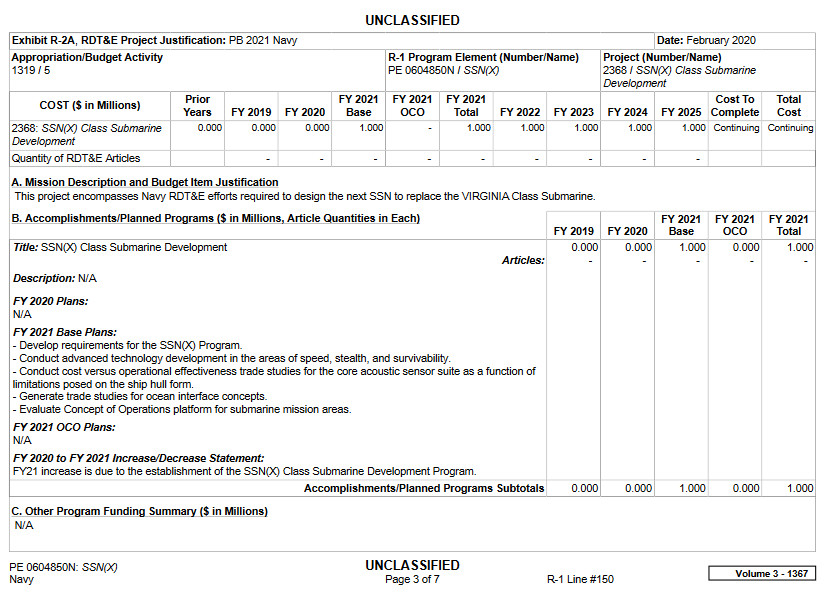
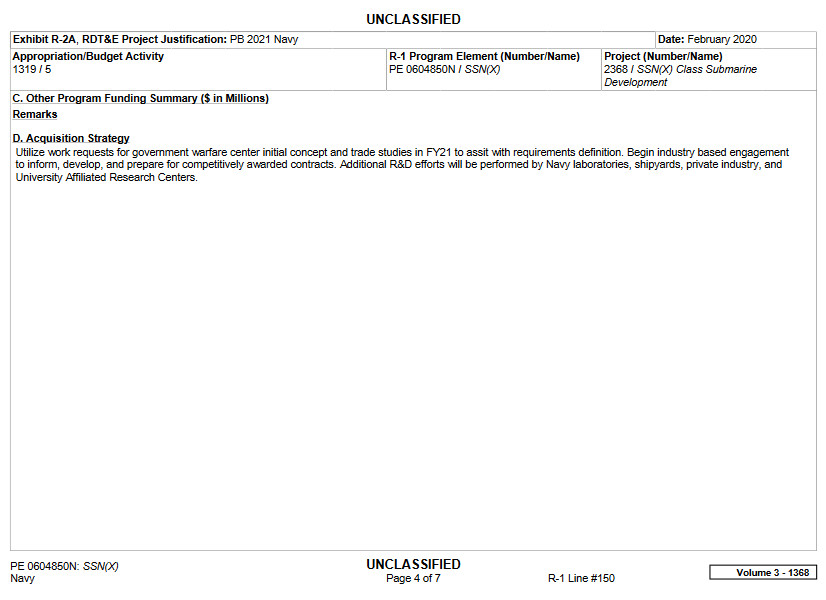
In recent years, the U.S. Navy has been outspoken about increases in Russian submarine activity in particular in the North Atlantic and the East Coast of the United States, concerns you can read about in more detail in these recent War Zone pieces. The service is also faced with dramatic increases in the size and capabilities of China’s People’s Liberation Army Navy, including its submarine forces, which is increasingly active across the Pacific, as well as other regions of the world.
“Unlike the Virginia Class Submarine, which was designed for multi-mission dominance in the littoral, SSN(X) will be designed for greater transit speed under increased stealth conditions in all ocean environments, and carry a larger inventory of weapons and diverse payloads,” the budget request continues. “While SSN(X) will be designed to retain multi-mission capability and sustained combat presence in denied waters, renewed priority of the anti-submarine warfare (ASW) mission against sophisticated threats in greater numbers will influence the design trade space.”
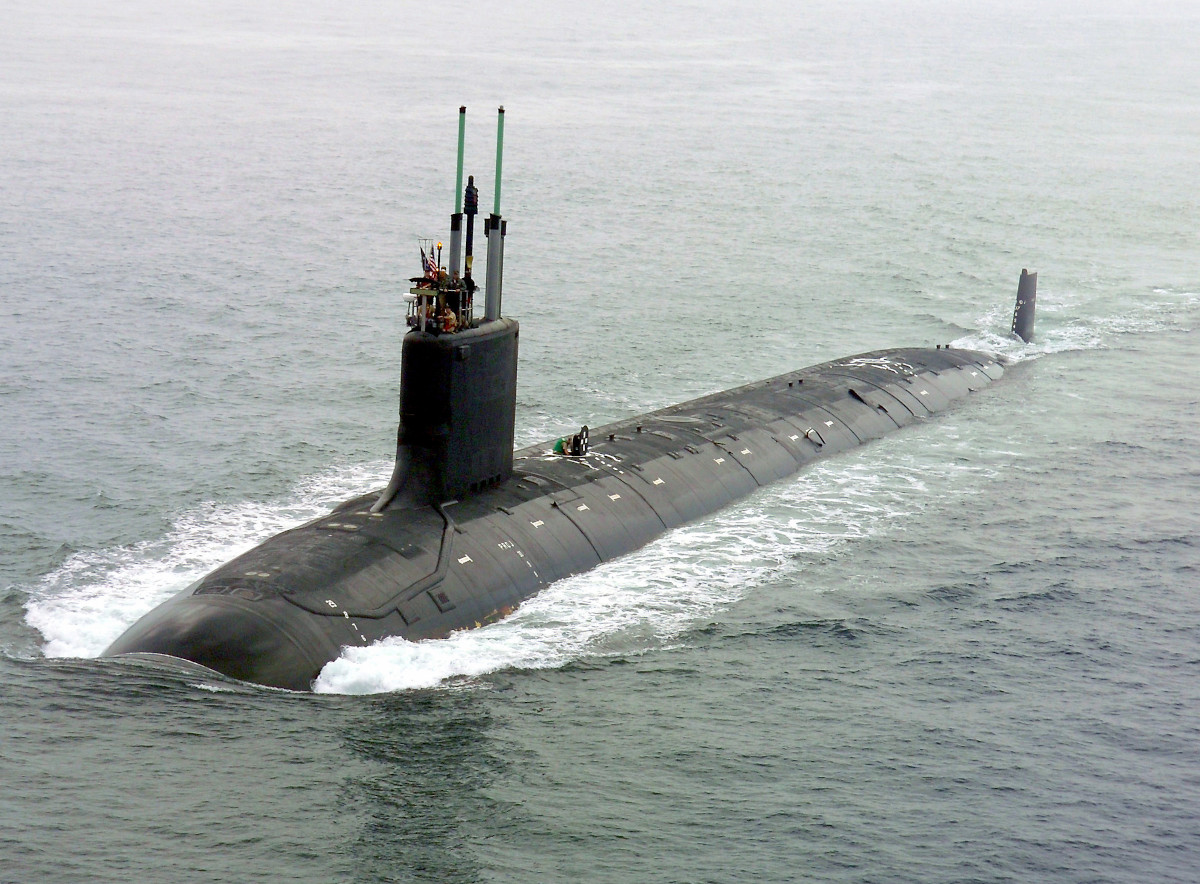
The Congressional Budget Office disclosed the first details about the Navy’s plans for a new attack submarine in a report in October 2018. At that time, CBO’s analysts said that the notional design would be similar in size to the first two examples of the Seawolf class and be faster, stealthier, and carry more torpedoes than existing Virginia class submarines. Block I through Block IV Virginias will all have a standard loadout of 37 Mk 48 heavyweight torpedoes. The larger Block V boats will have a larger load of 65 Mk 48s. The Seawolfs can carry up to 50 of these torpedoes.
The Navy originally planned to buy 29 Seawolfs, but ultimately received just three, all of which are now heavily modified special-purpose submarines. The first-in-class USS Seawolf and the USS Connecticut have submerged displacements of around 9,100 tons, more than 1,000 tons that of Block I Virginias. The third Seawolf, USS Jimmy Carter, is 100 feet longer and displaces around 3,000 tons more on account of the addition of a highly specialized Multi-Mission Platform (MMP) section added to the hull. You can read more about this modification, which was part of broader changes to enable the boat to perform top-secret intelligence-gathering and espionage missions, in this previous War Zone piece.
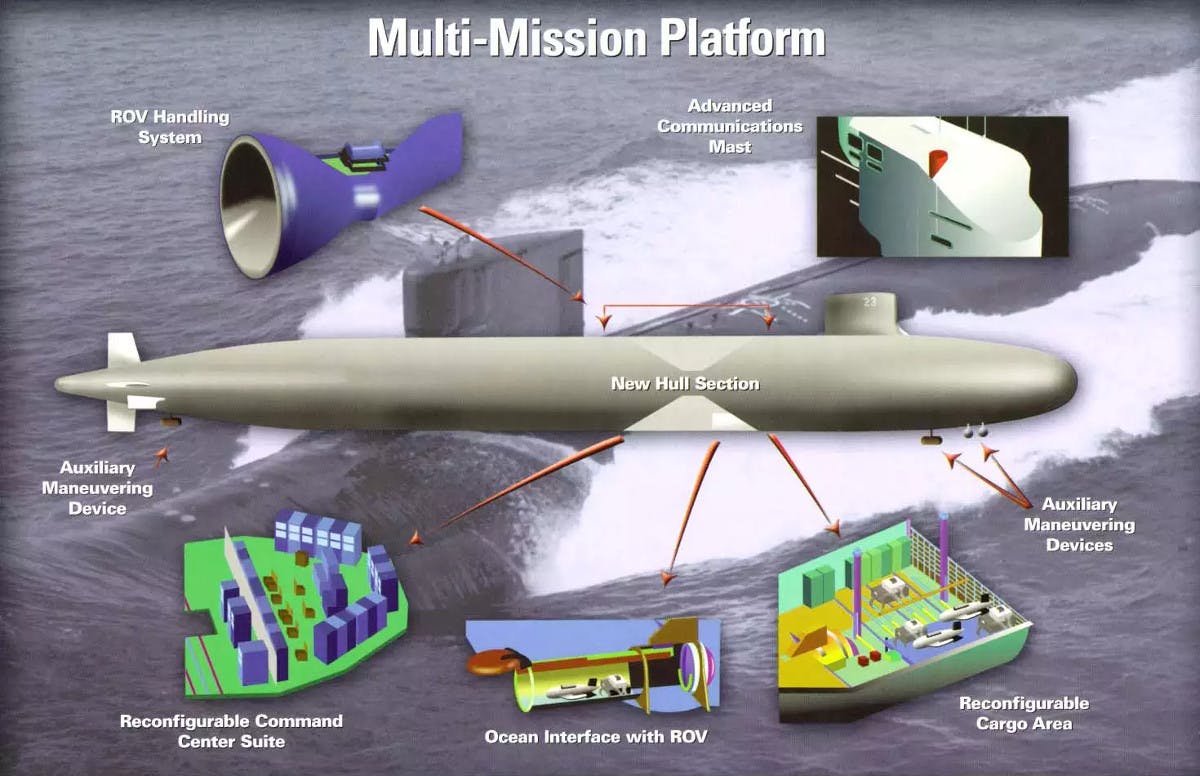
The Navy’s latest budget documents make clear that it wants SSN(X) to have powerful networking capabilities, including the ability to share information with various other platforms, which could include unmanned undersea and surface vessels. The service has already been a pioneer in networking and sensor fusion capabilities, with hopes that it will eventually be able to link all of its ships, submarines, aircraft, and other assets.
The budget request also interesting notes specifically that the new attack submarine will have to be able “to defend against threat UUVs [unmanned undersea vehicles].” The Navy does not name any particular systems that it is concerned that SSN(X) might encounter, but Russia and China are notably developing various UUVs.
All of this notwithstanding, it is important to remember that the SSN(X) program is still very much in its infancy. The Navy’s budget proposal says its immediate priorities are on the development of firm requirements for the submarine, as well as conducting various studies into the projected available industrial base capabilities, cost of development and procurement, and concepts of operation for the new boats. The service will look to “conduct advanced technology development in the areas of speed, stealth, and survivability,” as well.
There are still significant concerns about how much it might cost for the Navy to actually acquire a fleet of SSN(X) submarines in the future. Just how expensive the Seawolfs were, in the end, was a major factor in the decision to dramatically curtail how many the service ultimately bought. In the end, Seawolf and Connecticut each had a unit price of around $6 billion, in 2019 dollars. Along with the even more pricey Jimmy Carter, these remain the most expensive attack submarines ever built.
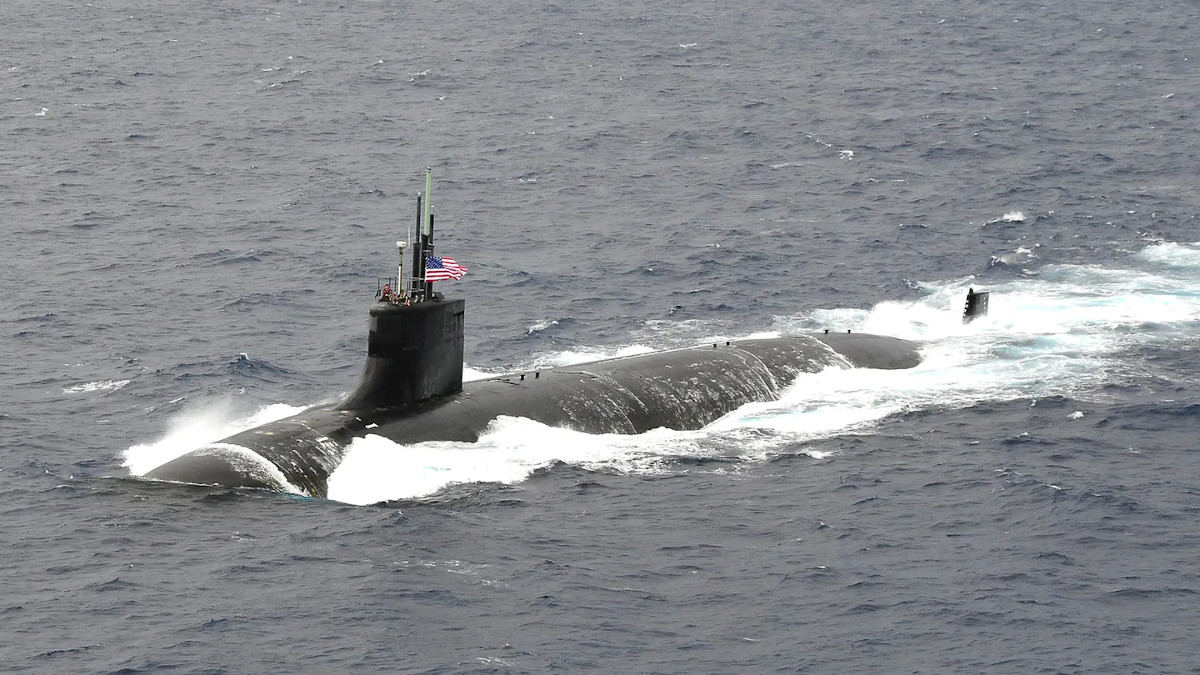
Back in 2018, CBO had questioned the validity of the Navy’s projection that it could buy SSN(X)s for around $3.1 billion each. The economies of scale from buying a larger fleet of submarines could help keep unit costs down, but the Navy is still talking about new, highly advanced design.
In addition, the Navy is still facing difficulties in balancing its shipbuilding budgets against other priorities and continues to struggle to find a realistic path toward meeting the Congressionally-mandated goal of a total fleet of 355 ships and submarines. At the same time, with regards to submarine procurement specifically, the service is already staring down concerns about how any real cost growth in the acquisition of its already extremely expensive
Colombia class ballistic missile submarines might impact future budgets. As it stands now, the Navy doesn’t expect to begin receiving any SSN(X)s until 2038 at the earliest.
All told, the exact requirements for and concepts surrounding the SSN(X) will all but certainly morph and evolve as time goes on, but the Navy’s budget request for the 2021 Fiscal Year makes clear that the service wants to move ahead with the development of its next attack submarine.
Contact the author: joe@thedrive.com
